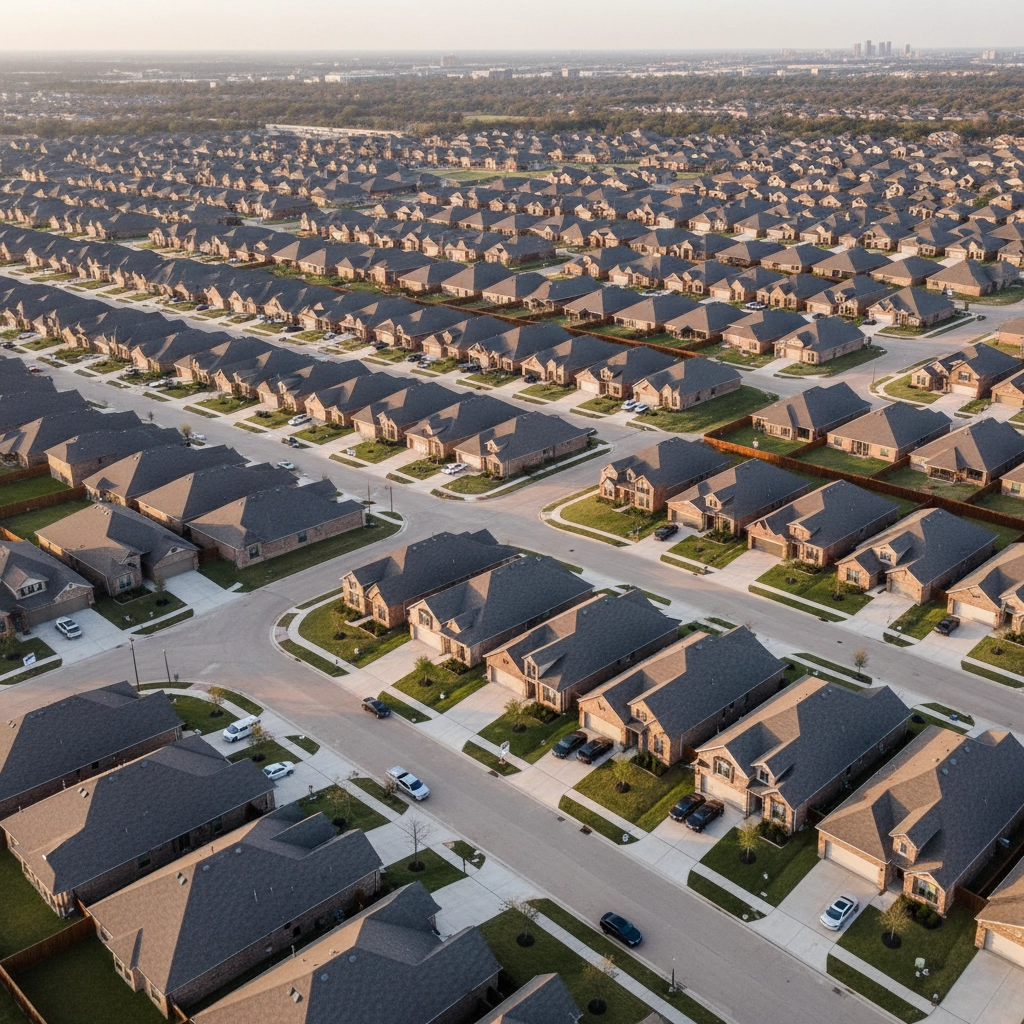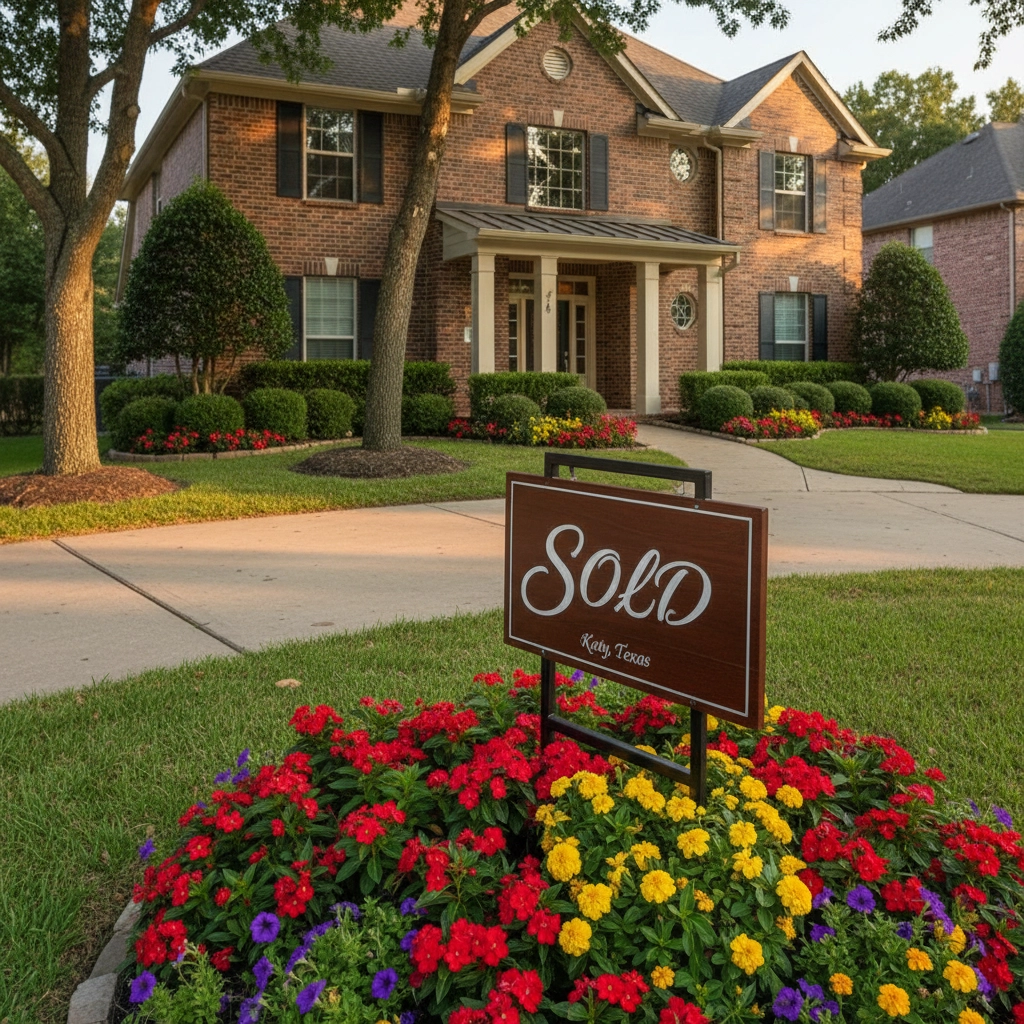Why This Year Is Perfect for Smart Buyers (But Sellers Need a New Game Plan)

Article Overview
This comprehensive analysis examines Houston's transformed real estate landscape in 2025, covering:
- Current market conditions and key statistics driving change
- Buyer advantages created by increased inventory and stabilized rates
- Seller challenges and required strategic adjustments
- Neighborhood-specific trends across Houston, Sugar Land, and surrounding areas
- Investment opportunities in the rebalanced market
- Forward-looking projections for the remainder of 2025
The Houston real estate market has undergone a fundamental shift in 2025, transitioning from the seller-dominated environment of recent years to a more balanced marketplace that strongly favors informed buyers while requiring sellers to adopt entirely new strategies.
The Market Transformation: Key Numbers Tell the Story
Houston's real estate landscape changed dramatically throughout 2025, with inventory levels reaching 14,387 available homes by March: a substantial 29.2% increase from February alone. This inventory surge has been even more pronounced in key suburban markets, with areas like Katy-Fulshear experiencing a 43% year-over-year inventory increase.
The market now maintains a 5.4-month supply of homes, representing approximately four times the selection buyers had during the peak seller's market of 2021-2022. This dramatic shift stems largely from aggressive new construction activity, with 35.1% of Houston listings consisting of newly built homes.

Mortgage rates have stabilized around 6.7% for 30-year loans, providing predictability that was absent during the volatile rate environment of previous years. While elevated by historical standards, this stability has encouraged renewed buyer confidence and mortgage application activity.
Why 2025 Became the Year of the Buyer
Expanded Affordability and Options
The combination of increased inventory and rate stabilization has meaningfully improved housing affordability. 40% of Houston-area households can now afford a median-priced home in 2025, representing a significant expansion of the buyer pool compared to the previous two years when high prices and rising rates eliminated many potential purchasers.
Enhanced Negotiating Power
Buyers have gained substantial leverage throughout the negotiation process. Properties across Houston now average 56 days to reach contract, with some areas in Katy and Cypress requiring closer to 60 days. This extended timeline provides buyers room for selectivity and negotiation that was impossible during the frenzied seller's market.
The sale-to-list price ratio in Katy stands at 95.94%, with only 10.39% of homes selling above asking price. Nearly 30% of listings have experienced price reductions, demonstrating the market's shift toward buyer-friendly conditions.
Strategic Timing Advantages
Buyers entering the market in fall 2025 benefit from seasonal patterns that historically favor purchasers. Late summer through fall typically delivers the most significant negotiating opportunities, as seller motivation increases while buyer competition decreases.

The New Reality for Sellers: Adaptation Required
Pricing Strategy Becomes Critical
Sellers entering 2025 with expectations formed during 2021-2023 face challenging adjustments. While homes still close at approximately 98% of asking price market-wide, this statistic masks crucial details: overpriced listings no longer generate multiple offers or bidding wars. Instead, they remain on the market while properly priced homes in desirable locations receive buyer attention.
Market Becomes Intensely Location-Specific
The market has developed distinct neighborhood characteristics. Properties in top school zones and established areas like The Woodlands, Katy, and Cypress continue moving efficiently when priced appropriately. However, sellers in less competitive locations face extended marketing periods and increased buyer scrutiny.
Pre-Listing Preparation Becomes Essential
Professional presentation has evolved from optional to mandatory. Strategic staging, professional photography, and comprehensive pre-listing improvements now provide more value than mid-sale price reductions of $10,000 or more. First impressions carry exponential weight when buyers have dozens of alternatives.
Houston Area Market Specifics
Sugar Land and Southwest Houston
Sugar Land's market reflects the broader Houston trends while maintaining premium characteristics. Properties in established neighborhoods with top-rated schools continue commanding strong prices, though sellers must price competitively from listing day one.
Katy and West Houston Suburbs
The Katy area exemplifies the new market dynamics, with flat pricing trends and increased builder incentives in newer developments like Fulshear. Established Katy neighborhoods with mature landscaping and proximity to top schools maintain stronger performance.

The Woodlands and North Houston
North Houston markets, including The Woodlands corridor, demonstrate resilience due to corporate relocations and employment growth. However, even these premium markets require strategic pricing and presentation.
Investment Opportunities in the Rebalanced Market
Single-Family Rental Potential
The increased inventory and moderating prices create entry points for investors who were priced out during peak seller conditions. Houston's robust rental market, driven by consistent population growth and diverse employment opportunities, supports strong rental investment fundamentals.
Long-Term Appreciation Projections
Conservative forecasts suggest Katy area properties could reach $404,102 by 2030, representing approximately 16.56% growth over five years. Spring area markets show more aggressive projections, with potential 26.129% price increases over the next decade.
Geographic Diversification Strategies
Investors can now access multiple Houston submarkets simultaneously, spreading risk across different economic drivers and demographic trends. The expanded inventory allows for portfolio building that was impractical during inventory-constrained periods.

Strategic Recommendations by Market Participant
For Buyers
Timing Strategy: Take advantage of expanded selection and negotiating power while avoiding rush decisions that characterized previous market cycles.
Financing Preparation: Secure pre-approval at current rate levels and maintain flexibility for potential rate improvements.
Geographic Flexibility: Explore multiple submarkets to maximize value and minimize competition.
For Sellers
Pricing Discipline: Price competitively from day one rather than testing market tolerance with inflated asking prices.
Presentation Excellence: Invest in professional staging, photography, and property improvements before listing.
Timeline Adjustment: Budget for longer marketing periods and maintain realistic expectations about negotiation dynamics.
For Investors
Market Entry Strategy: Focus on cash-flowing properties in established rental markets with strong employment fundamentals.
Geographic Diversification: Build portfolios across multiple Houston submarkets to spread risk and optimize returns.
Long-Term Perspective: Position for Houston's continued population and economic growth rather than short-term appreciation plays.
Market Projections Through Year-End 2025
Expert analyses project modest appreciation for the remainder of 2025, with nearly 2% increase in home values by year-end. The Texas Real Estate Research Center forecasts median home prices finishing just above $350,000, while some analyses predict a 1% year-over-year decline by late 2025.
The rental market continues demonstrating strength, providing fundamental support for the broader real estate ecosystem and suggesting the market correction represents healthy rebalancing rather than systemic problems.

Key Takeaways for Market Participants
Houston's 2025 real estate market represents a decisive transition from seller-dominated conditions to a balanced environment favoring prepared buyers. Success now requires understanding new market dynamics rather than relying on strategies from previous years.
Buyers benefit from expanded inventory, stabilized financing costs, and genuine negotiating power. Sellers must embrace competitive pricing, superior presentation, and realistic timeline expectations. The market hasn't collapsed: it has returned to conditions where quality, price, and strategic positioning determine outcomes rather than scarcity and speculation.
Those who adapt to these rebalanced market conditions will find opportunities for successful transactions, while those clinging to outdated expectations may find themselves watching properly positioned properties sell while their own listings stagnate. The fundamentals of Houston's diverse economy and continued population growth support long-term real estate health, making 2025 an ideal year for informed market participants to achieve their goals.

Home Dream Solutions Listings




